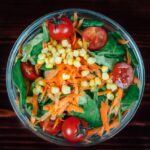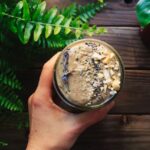Snow is mostly water but it also contains other compounds, such as pesticides and carbon. As a result, snow can be rich in potentially dangerous pollutants and chemicals. While snow begins as mostly water, it can accumulate pollutants and chemicals in the air and on the ground. However, most snow is healthy to eat. Listed below are some common dangers to eating snow. These risks can vary by region. Freshly fallen snow can be a safe option for many people.
Avoiding yellow snow
Regardless of whether or not you live in an urban area, you should avoid eating yellow snow and any other colored snow. The snow is still clean and fresh, but it can be contaminated by other substances. Yellow or brown snow is not safe to eat. It has been produced by the process of dry deposition, when dust sticks to snow. Watermelon snow, on the other hand, contains algae and is therefore not edible.
The other kinds of snow can be hazardous to your health, though eating blue-colored snow is safe. Watermelon snow can have nasty toxins, and snow colored by pollution may contain toxic metals. Yellow snow is caused by golden algae, which are related to Hydrurus-related algae. Toxins from the algae can be harmful to human health, so it’s best to avoid snow that is yellow in color.
In addition to these factors, snow can be a great source of pollution, especially when it has been sitting out for a long time. You should also avoid snow that is pink in color, as it contains red algae. You should also avoid yellow snow and any snow that has been plowed or that has been exposed to excessive amounts of pesticides. You should also avoid eating snow that is dirty or has been sitting for a long time.
Avoiding discolored snow
Discolored snow has several dangers for our health, and we should avoid it. Snow that is green or brown is usually contaminated with algae. Grey or blue snow contains grit or toxins. This type of snow should never be eaten. If you must eat snow, avoid it near smokestacks, active volcanoes, or radiation accidents. Generally, snow that is white is fine to eat.
While snow that is discolored isn’t necessarily unsafe to eat, it should be avoided as a precaution. Most snow is contaminated by bacteria and algae, which live on it. Plants can also discolor snow by adding water-soluble pigments, such as astaxanthin. Some people view these organisms as a natural protein boost for their bodies. Despite the risks, snow that is not discolored is generally safer than water from public sources.
When choosing snow to eat, make sure you get clean, white snow. The only exception to this rule is if the snow has particles. Otherwise, it could be filled with bacteria, debris, or contaminants. To get the purest snow, you can scoop it from the yard. If possible, avoid scraping snow from the window sill or the car. Plowed snow might contain sand, chemicals, or even debris, which makes it unfit for consumption.
Avoiding snow that’s too close to the ground
It may sound contradictory, but avoiding snow that’s too close to the ground actually has a lot of benefits. While lead is no longer a threat, eating snow that’s close to the ground may contain traces of toxic lead. The reason why it’s not healthy for eating is that the snow that falls near busy roads is often contaminated with lead residue from automobile exhaust fumes.
Depending on where you live, snow from the roadside can contain harmful chemicals, air pollutants, and toxins. Even though snow is usually white and bright blue, it can be contaminated with dirt, chemicals, or bacteria. You should avoid eating yellow snow, and you should never eat snow that is plowed or contaminated by pesticides. Aside from this, snow from freshly fertilized fields might contain toxins from car exhaust.
Avoiding snow that’s too close to smokestacks
Industrial snow typically occurs during the winter season. It occurs when highly warm smokestack air rises vigorously into the lower atmosphere and cools to the dew point. This process requires a layer of fog in the lower atmosphere to trigger an inversion layer that allows the smokestack moisture to rise to a certain level. This fog then turns into fine ice crystals.
Avoiding snow that’s too close to active volcanoes
If you live near an active volcano, it’s important to prepare for an eruption by knowing where to evacuate and staying indoors. If a volcanic eruption occurs, talk with your insurance agent and make evacuation plans. You may need to purchase protective gear, such as a dust mask, and prepare a plan for your pets as well. Last-minute plans can be upsetting and confusing, so it’s important to know what to do in advance. Communicating with your family and insurance agent about evacuation plans can help minimize your stress and anxiety.
Because volcanoes are dangerous, scientists monitor the amount of SO2 that is released from erupting volcanoes. The gas is deadly for humans and is harmful for vegetation. Scientists have warned of the dangers of volcanic smog, which is dangerous for humans and vegetation. For this reason, it’s vital to avoid skiing or snowboarding in areas with low elevations or depressions.
Aircraft flying over an active volcano face serious hazards. Ash from volcanic eruptions can reduce visibility, damage jet engines, and impair flight controls. Fortunately, volcanoes are more closely monitored than they were just a decade ago. However, many active volcanoes in the U.S. are not monitored at adequate levels. That’s why it’s crucial to keep a safe distance from them.
Avoiding dirty snow
While snow is perfectly safe for human consumption, there are several factors to consider when deciding whether it’s clean enough to eat. The first thing to keep in mind is the amount of dirt it’s likely to have accumulated. It’s best to stay away from dirty snow, which has a pink or yellow color. It may be full of toxic red algae. Additionally, snow from a dirty street or on a farm should be avoided.
Depending on where you live, the amount of dirt and pollution contained in snow may vary. Snow collected in rural areas may contain dust or agricultural chemicals, which can cause health problems. In urban areas, the snow may have more contaminants, including smoke and air pollution. Even if snow is untouched, it could still contain harmful chemicals from car exhaust fumes. So, if you can’t avoid dirty snow, don’t touch it.
In addition to dirt, snow can contain pollutants from the air. The first snowflakes may contain more pollutants than later snowflakes. However, the particles are small, and it is safe for children to eat snow in small amounts. This is not to say that snow is unsafe to eat, but you should still avoid it if you’re unsure. You should never eat snow that is contaminated by chemicals or sand.









